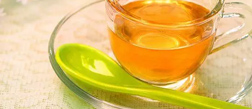新冠病毒與食品安全
時間:2020-03-04 13:55:37
1、美國食品與藥品監督管理局(FDA)
FDA在2020年2月27日發布的“新冠病毒與供應鏈”文章中指出,目前沒有任何報告顯示新冠病毒會通過病毒傳播。但為保證食品安全,任何時候,在準備和烹調食物時都應遵循食品安全五要點。
We are not aware of any reports at this time of human illnesses that suggest COVID-19 can be transmitted by food or food packaging. However, it is always important to follow good hygiene practices (i.e., wash hands and surfaces often, separate raw meat from other foods, cook to the right temperature, and refrigerate foods promptly) when handling or preparing foods.
https://www.fda.gov/news-events/press-announcements/coronavirus-covid-19-supply-chain-update
2、美國疾控中心(CDC)
美國CDC關于新冠病毒問答中指出,目前沒有證據顯示動物制品會傳播新冠病毒。
CDC does not have any evidence to suggest that animals or animal products imported from China pose a risk for spreading COVID-19 in the United States.
https://www.cdc.gov/coronavirus/2019-ncov/faq.html
3、加拿大政府網
加拿大關于新冠病毒常見問題解答中指出,新冠病毒在物體表面存活率很低。最關鍵的防護措施是勤洗手、避免沒洗手就接觸口鼻等。
14. Is there a risk of contracting COVID-19 if I touch a surface that was potentially contaminated?
In general, coronaviruses have poor survivability on surfaces, and are generally thought to be spread by respiratory droplets left behind after someone coughs or sneezes.
For COVID-19, researchers are actively investigating to learn more about the ways that COVID-19 is transmitted.
In the meantime, the best way to prevent respiratory and other illnesses is to:
avoid touching the eyes, nose and mouth;
consistently use good hand hygiene measures, which include frequent handwashing with soap and water for at least 20 seconds, or using an alcohol-based hand sanitizer if soap and water are not available;
maintain good respiratory etiquette, such as covering your mouth and nose with your arm or sleeve when coughing and sneezing, disposing of any used tissues as soon as possible, and following with handwashing or use of alcohol-based hand sanitizers where soap and water are not available;
regularly clean and disinfect surfaces that people touch frequently such as toilets, bedside tables, doorknobs, phones and television remotes with regular household cleaners or diluted bleach (1 part bleach to 9 parts water).
https://www.canada.ca/en/public-health/services/diseases/2019-novel-coronavirus-infection/frequently-asked-questions.html
4、歐盟疾控中心(ECDC)
歐盟ECDC對新冠病毒問答指出,目前沒有證據顯示新冠病毒會通過食物傳播。
There has been no report of transmission of the COVID-19 via food and therefore there is no evidence that food items imported into the European Union in accordance with the applicable animal and public health regulations governing imports from China pose a risk for the health of EU citizens in relation to COVID-19. The main mode of transmission is from one person to another
https://www.ecdc.europa.eu/en/novel-coronavirus-china/questions-answers
5、澳新食品標準局(FSANZ)
澳新食品標準局在關于新冠病毒與食品按照的專題問答中指出,無證據顯示會通過食物傳播。日常操作需注意食品安全五要點。
Can the virus be transmitted through food?
Previous experience with outbreaks of illness due to MERS-CoV, SARS-CoV and other respiratory viruses (e.g. avian influenza) suggest that novel coronavirus may have been transmitted from animals to humans.
Transmission through food is unlikely and there is no evidence of this occurring with novel coronavirus to date, however investigations to identify the source of the outbreak, the extent of spread of the infection, and mode(s) of transmission are continuing.
https://www.foodstandards.gov.au/consumer/safety/Pages/NOVEL-CORONAVIRUS-AND-FOOD-SAFETY.aspx
6、愛爾蘭食品安全局(FSAI)
愛爾蘭食品安全局(FSAI)在新冠病毒專題問答中指出,新冠病毒在食物中無法生長,目前無證據顯示食物會傳播新冠病毒。
Can the virus be passed on through food?
Experience with SARS and MERS suggest that people are not infected with the virus through food. So, it is unlikely the virus is passed on through food and there is no evidence yet of this happening with COVID-19 (coronavirus) to date.
Coronaviruses need a host (animal or human) to grow in and cannot grow in food. Thorough cooking is expected to kill the virus because we know that a heat treatment of at least 30min at 60ºC is effective with SARS.
https://www.fsai.ie/faq/coronavirus.html



